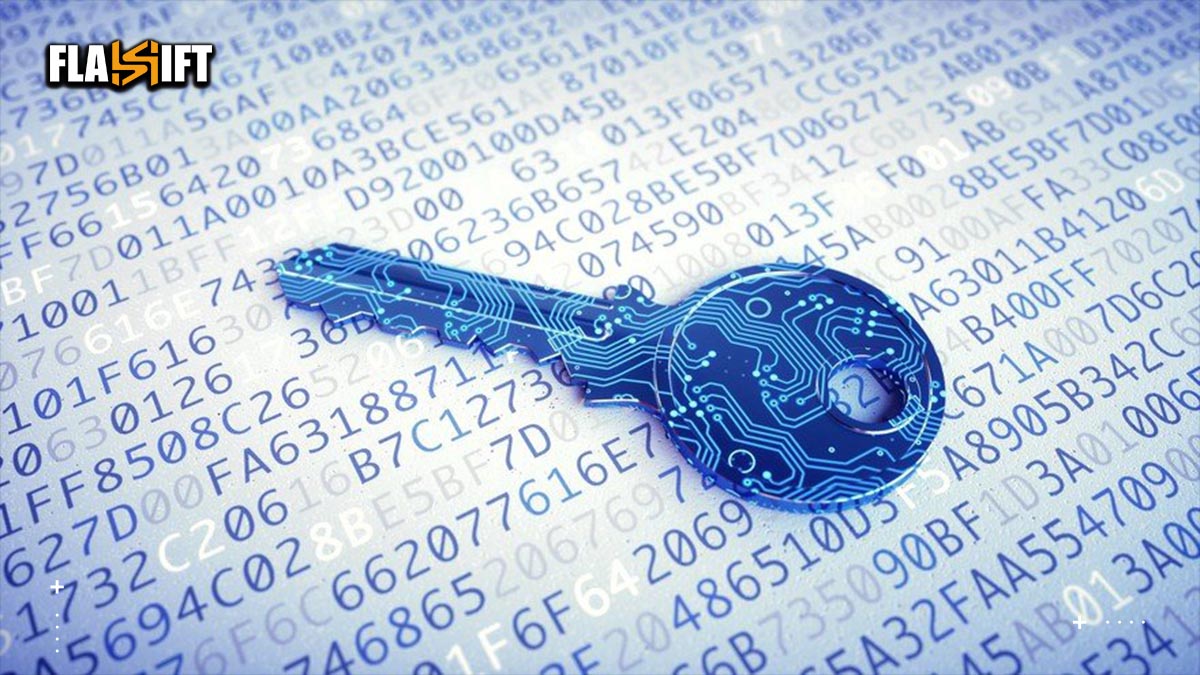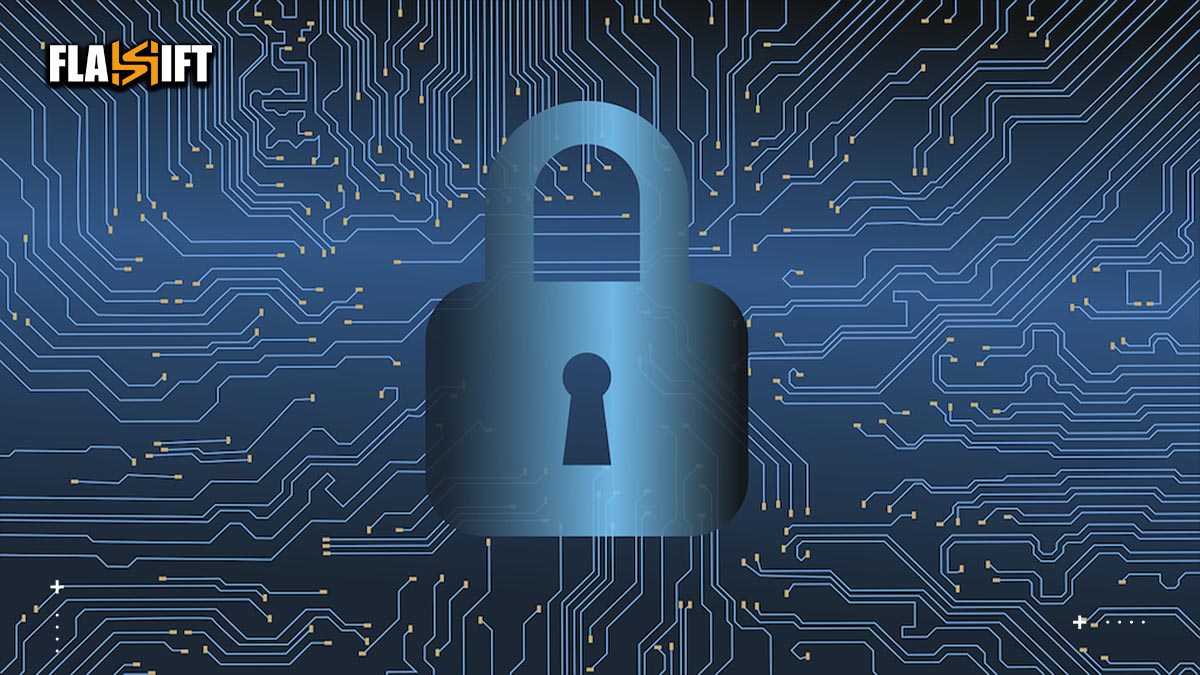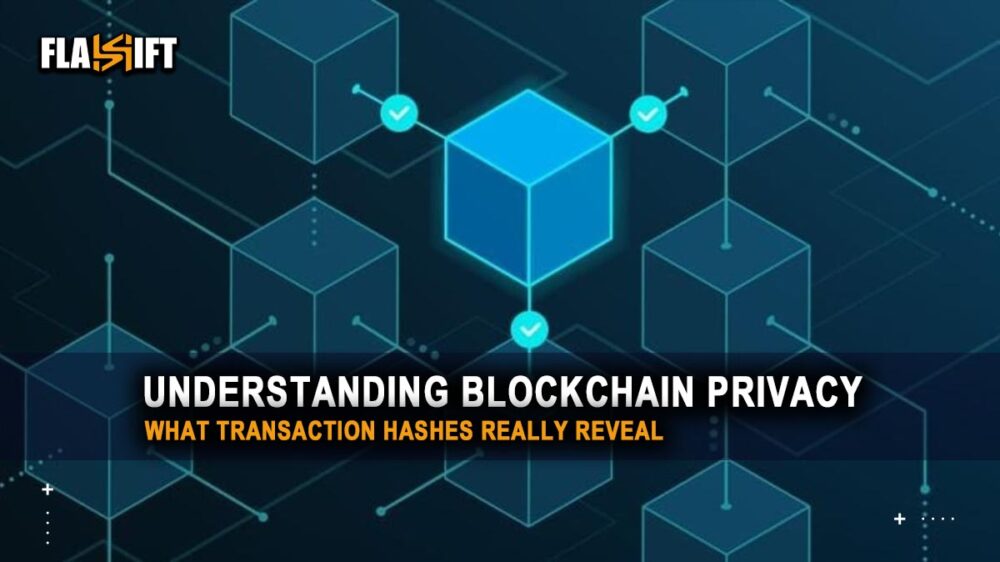Understanding Blockchain Privacy | Privacy remains a frequently misunderstood concept within the blockchain and cryptocurrency sectors. The central misunderstanding about transaction hashes arises from their essential function as unique identifiers for blockchain transactions. People mistakenly believe that the transaction hash provides complete anonymity. But in fact, its true nature involves more complexity.
The following discussion explains what transaction hashes expose and what they safeguard while showing how they contribute to the ongoing debate about transparent blockchain operations and personal privacy rights. Anyone participating in the decentralized ecosystem needs to grasp the significance of transaction hashes regardless of their experience level in cryptocurrency investments.
Understanding Blockchain Privacy | What Is a Transaction Hash?
A transaction hash, also known as a transaction ID (TXID), is a unique string of characters that identifies a specific transaction on a blockchain network. Think of it as a digital fingerprint that proves a transaction took place and allows anyone to track its status and details on a public ledger like Etherscan or Blockchain.com.
How It’s Generated
When a blockchain network receives a transaction broadcast it will automatically produce a transaction hash. This unique identifier emerges from a process which uses a cryptographic hash function to analyze transaction details including sender and receiver addresses alongside the total amount transferred and gas costs and a timestamp.
Bitcoin employs SHA-256 while Ethereum uses Keccak-256 as their cryptographic hash functions to create the transaction hash. The outcome of this process produces an unchangeable alphanumeric code which functions as the sole ID for a transaction.
What Information It Links To
Although a transaction hash doesn’t directly reveal names or identities, it links to a wealth of transaction-specific data that is publicly viewable. This includes:
- Sender and receiver wallet addresses
- Amount of cryptocurrency transferred
- Gas fees or transaction fees paid
- Timestamp of the transaction
- Status (pending, confirmed, failed)
- Block number where the transaction is recorded
Anyone with a transaction hash can look up these details using a blockchain explorer, making transparency a double-edged sword when it comes to privacy.
Read more: How to Get Monero Transaction Private Key
What Is a Private Key and How Is It Used?

A private key is a critical component of blockchain security. It’s a long, randomly generated string of characters that gives you full control over a cryptocurrency wallet and the assets it holds. Unlike public addresses, a private key must remain secret. It serves as the digital equivalent of a password or a signature that proves ownership and authorizes transactions.
The Role of Private Keys in Signing Transactions
When you initiate a transaction on a blockchain, you don’t just send coins but you digitally sign the transaction using your private key. This cryptographic signature does two things:
- Verifies Ownership: It proves that the transaction was authorized by the holder of the corresponding private key (i.e., the wallet owner).
- Ensures Transaction Integrity: It guarantees that the transaction hasn’t been altered after it was signed.
The actual private key is never transmitted across the network. Instead, your wallet software uses it to create a digital signature, which is then sent along with the transaction data. Network nodes verify this signature using your public key, confirming the transaction is authentic before it’s added to the blockchain.
Why Private Keys Must Remain Secret
Your private key is the only way to access and manage your crypto funds. If someone else obtains it, they can sign transactions and move assets out of your wallet. That’s why protecting your private key is absolutely essential.
Here’s why secrecy is non-negotiable:
- No recovery if lost: If you lose your private key (and you haven’t backed it up), there is no way to recover your assets. There’s no “forgot password” option in decentralized systems.
- No way to stop unauthorized access: If someone steals your key, they can instantly drain your wallet. There’s no bank or authority to reverse the transaction.
- Scams and phishing attacks: Many hackers and scam sites attempt to trick users into revealing their private keys under the guise of wallet recovery or airdrops.
To stay safe, store your private key offline (in cold storage or a hardware wallet), avoid typing or copying it into websites, and never share it with anyone—even if they claim to be support staff.
Can You Get a Private Key from a Transaction Hash?

The cryptocurrency world holds on to a persistent misconception that it is possible to retrieve private keys from transaction hashes. This is completely false and technically impossible. Yet, many scams and phishing schemes still exploit this misconception to trick unsuspecting users. Understanding why this is impossible is crucial to protecting your crypto assets.
The Technical Impossibility Explained
A transaction hash is simply a cryptographic output generated from the details of a transaction (such as sender/receiver addresses, amount, gas fee, and timestamp). It does not contain the private key or any sensitive information that can be reversed or decrypted. Here’s why you can’t get a private key from a transaction hash:
- One-way cryptographic functions: Blockchain technology use secure hash algorithms (like SHA-256 or Keccak-256), which are designed to be irreversible. You can’t “un-hash” a hash to get the original data.
- Private keys are never part of the transaction data: When you sign a transaction, the private key creates a digital signature, but the key itself is never included in the transaction or the hash.
- No link between the hash and the private key: Even if you see a transaction hash and know the public address, there’s no mathematical method to reverse-engineer or derive the private key.
So, no matter how advanced your tools or programming skills may be, it is mathematically unfeasible to extract a private key from a transaction hash. If it were possible, the entire foundation of blockchain security would collapse.
Common Scams Based on This Myth
Unfortunately, many scammers exploit beginners who don’t fully understand how blockchain works. Here are a few common scams based on the false idea that transaction hashes can lead to private keys:
- “Hash cracking tools” or software: These fake apps claim they can extract private keys from transaction hashes or wallet addresses. They’re usually malware or phishing traps.
- “Send me your TXID and I’ll recover your lost coins”: Some scammers promise to help retrieve lost crypto using just a transaction hash. This is a lie—transaction hashes are public and provide no special access.
- Fake YouTube tutorials: Some videos claim to show how to derive a private key from a hash using coding tricks or tools. These are fabricated, often leading viewers to fake sites that steal wallet credentials.
- Telegram and Discord scammers: Posing as blockchain “engineers” or support staff, these fraudsters trick users into sharing transaction hashes, then use social engineering to get access to wallet info.
In conclusion, you cannot get a private key from a transaction hash—ever. Anyone who claims otherwise is either misinformed or trying to scam you. Understanding this core truth is key to staying safe in the decentralized world of blockchain.
What Can Actually Be Seen on the Blockchain?

Blockchain networks stand out through their essential characteristic of openness to the public. The blockchain system enables users to inspect and analyze real-time transactions through its public and unchangeable data structure which differs from conventional banking systems. Personal identities stay protected under this system. A comprehensive understanding of blockchain visibility requires learning about the specific data elements that remain open to the public.
Wallet Addresses, Values, Timestamps
Here are the core pieces of information that are publicly accessible for each transaction on most blockchains:
- Wallet Addresses: Both the sender’s and recipient’s public addresses are visible. These addresses are alphanumeric strings (e.g., 0xAbC123…) that serve as digital identifiers. While they don’t reveal real-world identities, consistent activity can make them traceable or linkable to known entities (especially if used with centralized exchanges).
- Transaction Values: The exact amount of cryptocurrency transferred in the transaction is shown, down to many decimal places. For example, you can see if 1.5 ETH or 0.0001 BTC was moved between wallets.
- Timestamps: Each transaction is marked with a date and time indicating when it was confirmed on the network. This allows observers to establish transaction chronology and monitor network activity.
- Transaction Fees: The fee paid to miners or validators is also recorded, including how much was spent and how efficiently the transaction was processed.
- Smart Contract and Token Activity: On smart contract platforms like Ethereum, additional data may include token transfers, contract interactions, or internal transactions, offering deeper visibility into DeFi activity, NFT transfers, or staking operations.
Transparency vs Privacy
Blockchain operates on a principle of pseudonymity, not full anonymity. While names and identities are not stored on-chain, the visible data can still paint a detailed picture of user behavior. This introduces both benefits and challenges:
Transparency Benefits:
- Anyone can verify a transaction without needing permission.
- It allows for auditable ledgers, improving trust in systems like decentralized finance (DeFi).
- It helps track illicit activities like fraud or money laundering when combined with forensic analysis tools.
Privacy Challenges:
- Repeated use of the same wallet can create a traceable profile of activity.
- If a wallet is linked to an identity (e.g., through a centralized exchange), its entire transaction history becomes visible.
- Observers can monitor balances, income streams, or patterns, which could compromise financial privacy or security.
In short, blockchains provide a high level of transparency by design but that doesn’t mean everything is exposed. You can see wallet activity, amounts, and timestamps, but you can’t directly identify the people behind the addresses without external data. Understanding this visibility is key to using blockchain safely while protecting your privacy.
Best Practices for Protecting Your Privacy

Blockchains deliver unparalleled visibility to users yet pose difficulties for those who need to safeguard their financial information. The good news is there exists a number of effective methods that people can implement to lower their risk while maintaining their financial privacy while using blockchains.
The following suggestions represent key steps that will help you safeguard your privacy within the cryptocurrency environment by selecting appropriate wallets and detecting common threats.
-
Using Non-Custodial Wallets
A non-custodial wallet gives you full control over your private keys and funds. Unlike custodial wallets (like those provided by exchanges), non-custodial wallets don’t require personal information or identity verification, making them a more privacy-friendly option.
Benefits of non-custodial wallets:
- No KYC (Know Your Customer) data linked to your wallet.
- You control your keys, not a third party.
- Less risk of surveillance or government tracking through centralized services.
Tips:
- Use wallets like MetaMask, Trust Wallet, or hardware wallets (like Ledger or Trezor).
- Avoid reusing addresses for multiple transactions—some wallets support automatic address rotation for improved privacy.
- Back up your recovery phrase offline and never share your private key.
-
Coin Mixers and Privacy Coins
If you want to further obscure the link between your transactions and wallet addresses, you can use coin mixers or privacy-focused cryptocurrencies.
Coin Mixers (also known as tumblers) are services that blend your crypto with others, breaking the transaction trail:
- Popular options include Tornado Cash (for Ethereum) or Wasabi Wallet and Samourai Wallet (for Bitcoin).
Be aware: Some mixers have come under legal scrutiny in various jurisdictions. Use them responsibly and understand the risks.
Privacy Coins are cryptocurrencies built with privacy in mind:
- Monero (XMR) uses stealth addresses and ring signatures to make transactions untraceable.
- Zcash (ZEC) offers optional privacy with its shielded transactions.
These coins are designed to make sender, receiver, and amount details invisible on-chain.
-
Staying Safe from Misinformation
Privacy threats don’t always come from hackers—sometimes they come from misleading advice and scams disguised as legitimate tools or tutorials.
To stay safe:
- Never share your private key or seed phrase with anyone. No legitimate service or support team will ask for it.
- Ignore claims that promise to “unlock” wallets or recover lost coins using a transaction hash or wallet address. These are common scams.
- Verify tools before using them—only download wallets or privacy tools from trusted, official sources.
- Stay updated by following reputable crypto security sources like the Electronic Frontier Foundation (EFF), Coin Center, or community-led security forums.
In summary, maintaining privacy on the blockchain requires proactive steps—choosing the right tools, minimizing traceable behavior, and staying alert to misinformation. While perfect anonymity may not be possible on public blockchains, with the right approach, you can significantly limit your exposure and protect your financial identity.
FAQ
- Can someone track my entire crypto history using a single transaction hash?
No, a transaction hash only links to one specific transaction. However, if someone connects that transaction to your wallet address, they may trace your full history.
- Does a transaction hash include the private key or digital signature?
The private key is never included in the hash. Only a digital signature (derived from the private key) is part of the transaction data, and even that is not reversible.
- If I know a transaction hash, can I see the exact purpose of the transfer (e.g., purchase, donation)?
No, transaction hashes don’t explain the reason behind a transfer. They show only the value, addresses, and technical data. The context remains unknown unless provided off-chain.
- Can transaction hashes be deleted or hidden from the blockchain?
Once a transaction is confirmed, its hash becomes a permanent part of the public ledger and cannot be deleted or altered.
- Do transaction hashes reveal who owns the wallets involved?
Not directly. Wallets are pseudonymous, but ownership could be inferred through behavioral patterns or if tied to identity on centralized platforms.
- Is it dangerous to share a transaction hash with someone?
Generally, no. Transaction hashes are public. However, sharing them repeatedly could unintentionally expose patterns or wallet connections over time.







